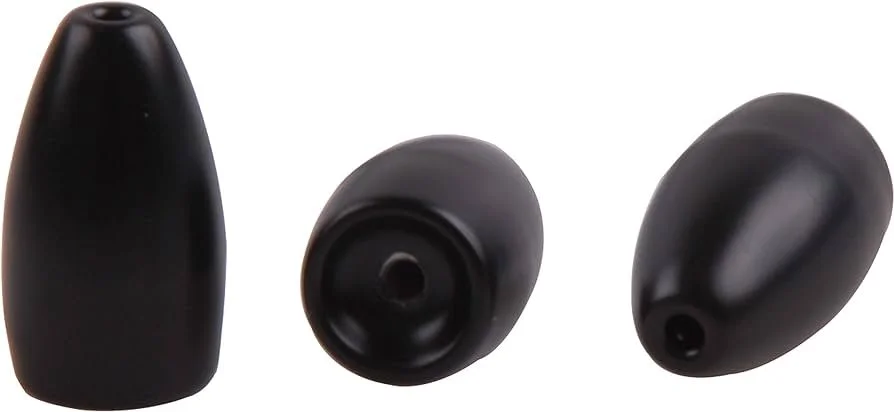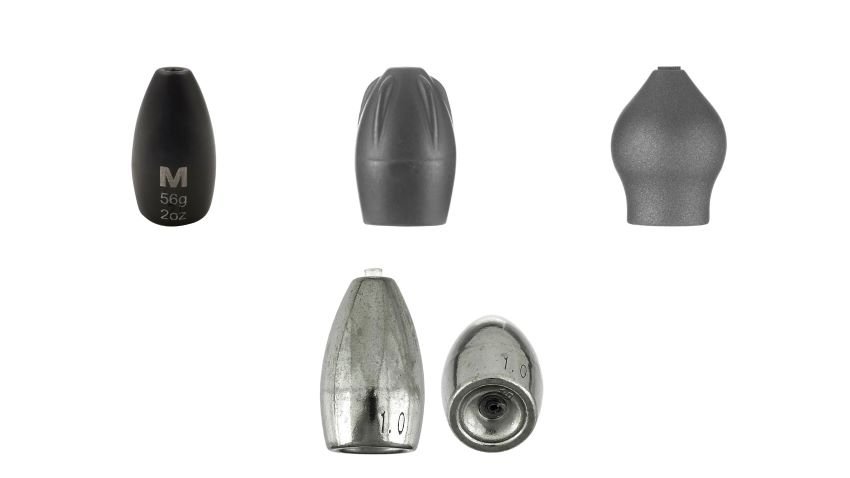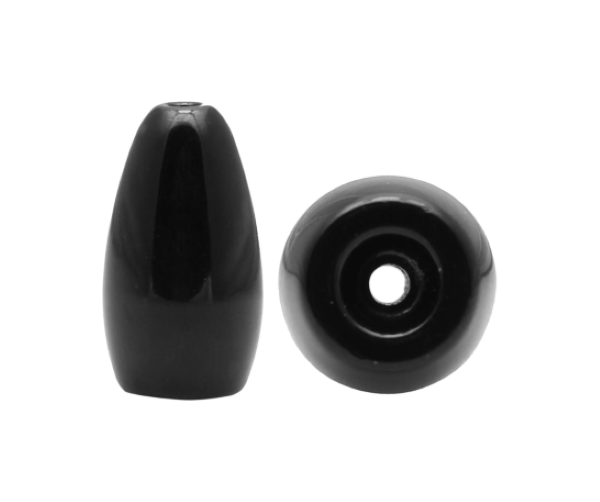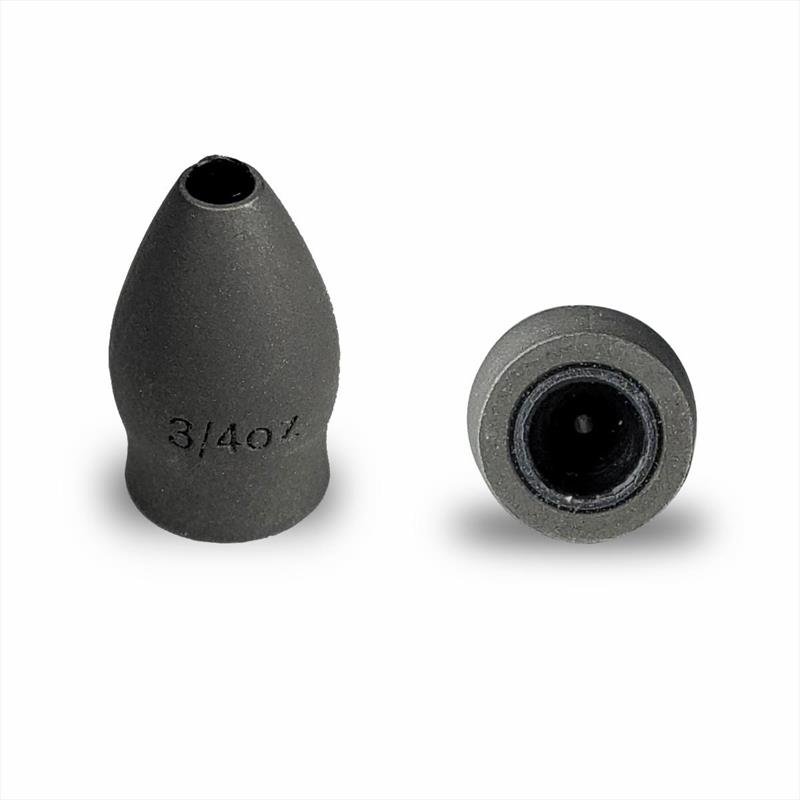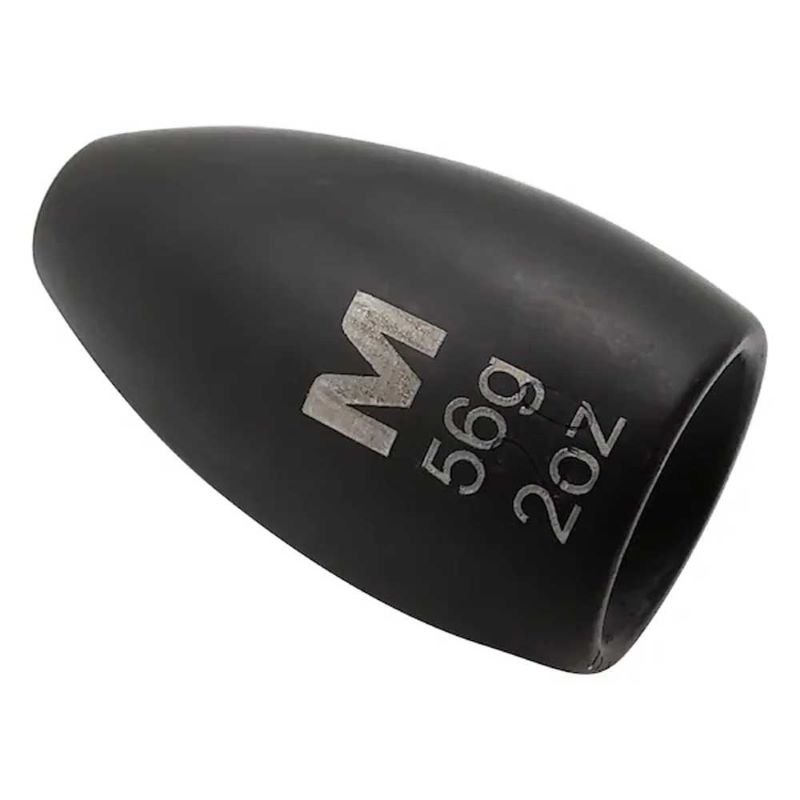Bunker-Busting Big Tungsten
Prior to the use of tungsten in bullet weights, punching thick mats was an onerous and inefficient task. The lead weights that were available were large, cumbersome, and relatively soft. It was tough to find one that looked natural behind a creature bait and still managed to penetrate. Then, when companies like Lake Fork Tackle and Tru-Tungsten introduced tungsten to the widespread bass fishing community, it opened up new worlds under thick canopies. A relatively-svelte one-ounce weight could put your bait in deep caverns where bass had not seen lures before.
For a while, a one-ouncer was the gold standard for getting through the thick stuff. Unfortunately, some layers of vegetation and trash mats were too thick even for that. Slowly we started to get bigger weights, usually up to one and a half ounces and your favorite brand likely runs to that size. However, if you need something beefier, there are even heavier options.
Things to Consider When Purchasing Super-Heavy Tungsten Weights
Size – Not all sinkers that weigh the same have the same overall volume. Most consist of only a percentage of tungsten, so the amount that it’s been “watered down” may result in a bigger profile.
Shape – Traditional worm weights were and are “bullet shaped,” but as the manufacturers specifically targeted the flipping/punching market they started to make them shorter and more bulbous. The proportions vary from manufacturer to manufacturer, as do other attributes. For example, some are ridged or octagonal, while others are effectively round. The Flat Out Frontloader claims to shift the weight toward the front while shortening the overall length of the weight. The Gamakatsu G-Shield punch weights also have a weight-forward design and a recessed area for your hook eye.
Color – Basic black tends to be the universal color, able to still look natural with any color of soft plastic, particularly under the dark cover of a thick mat. On occasion I’ve paired watermelon or green pumpkin or junebug weights with matching plastics, but I’ve always reverted to black, which also means that you don’t have to make a sinker change when you alter your craw or creature. I’ve heard some anglers say that they prefer plain, shiny metal. There are also matte finishes and shiny finishes, if you think that one or the other is preferable.
Features – Not all tungsten weights, even those that look the same and weigh the same, have the same features. One nice thing I’ve seen on some more recent introductions has been the imprinting of the weight on the side – so you know it’s 1 ¼ and not 1 ½, for example. Some anglers like an insert for the hole to prevent fraying of your braid, while others believe that the insert itself is a problem. Once you find a brand and style you like, one that doesn’t mess up your line, it pays to stick with it.
Additional Factors for Slinging Big Tungsten
Prepare to pay a hefty ransom for each big weight. Most of the ones in the 2 ounce range start at about 10 bucks each. I recall being at a tackle store at Okeechobee in the early 2010s and watching Chad Morgenthaler buy one – perhaps the first time he’d seen one – for 14 bucks. The days of buying a bag of multiple lead weights for $2-3 immediately became antiquated.
It's kind of sad when you buy $100 or $200 worth of weights and all you get in the mail is a box big enough for a watch or a baseball.
As noted above, the most critical element for me is a smooth line hole. If there’s even a slight burr, and you’re sawing your line back and forth across it, it’s a recipe for disaster. Weight gone, fish gone, money gone.
I find fishing the 1 ½ ounce weight all day substantially more tiring than a 1 ounce model, and the 2 ouncer is serious work. For that reason alone, I only fish it when it’s strictly necessary. Make sure that your flipping stick is up to the task, too. Your medium-heavy is not going to hack it. Get man-sized punch stops, too, because the constant pounding will obliterate them and then you’ll have to retie.
Most serious flippers seem to agree that you should only use these weights as a last resort. Many of them say that an ounce and a half will cover everything that 2 ounces will. Furthermore, they believe that on the hookset the oversized weight prevents the bass from getting the hook in the right place, pushes the mouth open and causes the angler lost opportunities.
While you should set the hook quickly and with gusto when you get a bite, do be careful about your positioning with respect to your fishing partner (and yourself). A 2 ounce weight rocketing through the air on no-stretch braid is a heat-seeking missile. I saw a co-angler once who’d been hit above the eye by a ¾ ounce model. An inch and a half lower and I’m pretty sure he would’ve lost the eye. If it hits you in the noggin or the nads you’re in for a world of hurt.
I’ve heard multiple anglers, some of whom I trust, talk about throwing their punch rigs up the air to help them penetrate the mat, but I’ve never actually seen it done or tried it.
Here are some of the weights over the 1.5 ounce mark available at Tackle Warehouse:
Eco Pro Tungsten Elite Series Flipping Weight – 1.75 and 2 ounces
Fitzgerald Fishing Tungsten Flippin' Weights — 2 and 2.25 ounces
Flat Out Tungsten Frontloader Punch Weight – 1.75 and 2 ounces
Picasso Gunmetal No-Chip Tungsten Flipping Weights – 1.75, 2, 2.25 and 2.50 ounces
Reins TG Tungsten Heavy Weight Slip Sinker – 2 and 2.50 ounces
WOO! Tungsten Never Chip Flipping Weights – 1.75 and 2 ounces
Through social media I’ve seen adds for bulk tungsten at exceptional prices, most of it from China. I’ve never ordered, but I know friends who have. Other than long waits, they’ve generally been happy with the quality of the product. Similarly, some tackle shops have their own brand of weights, often available on a per-weight basis. It’s not like 15 years ago, where there were only one or two brands available, and only in limited quantities.

